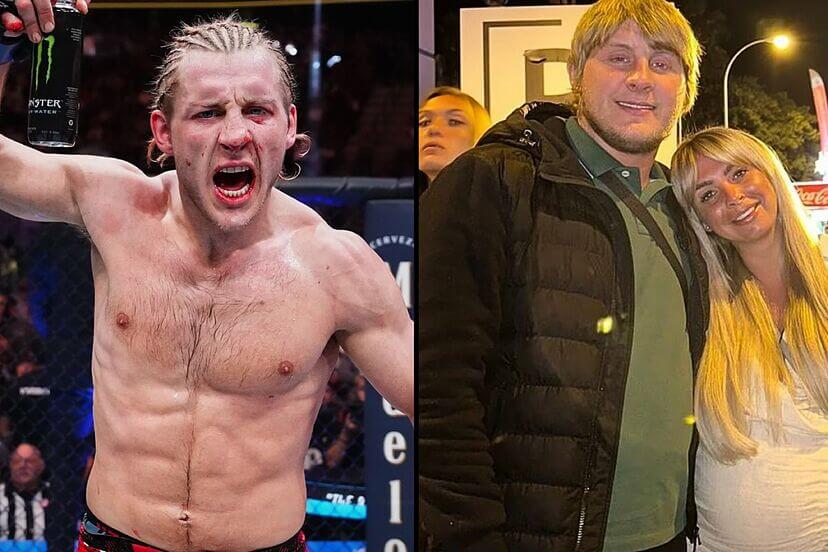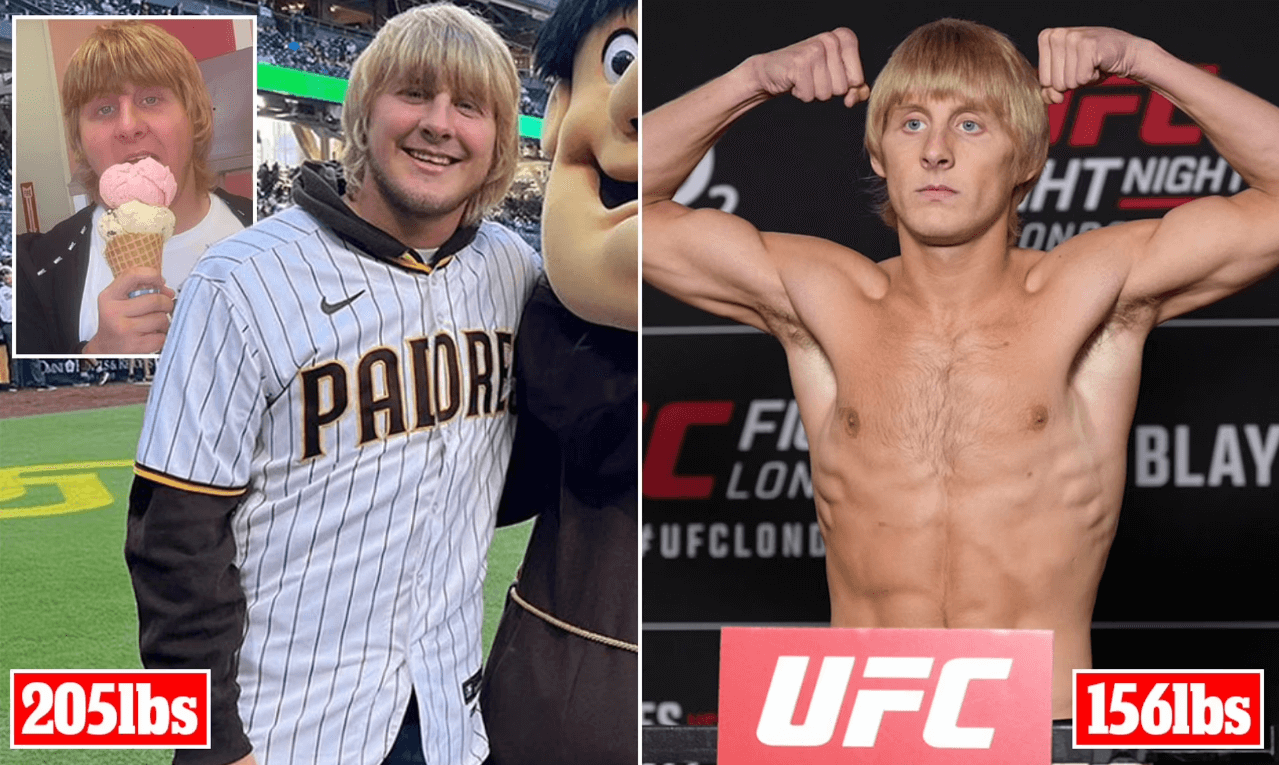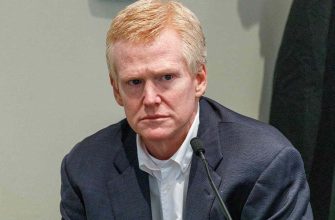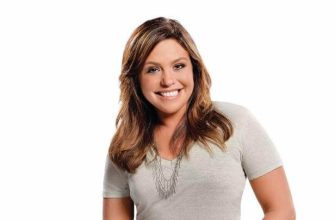Paddy Pimblett is an English mixed martial artist who competes in the lightweight division of the Ultimate Fighting Championship (UFC). He is known for his exciting fighting style and charismatic personality, earning him the nickname “The Baddy.” However, Pimblett has also become notorious for his dramatic weight cuts before fights. He has openly admitted to cutting over 20 pounds in the days leading up to weigh-ins throughout his career.
This extreme weight cutting enabled Pimblett to compete at featherweight earlier in his career despite walking around far above the 145 pound limit. Even after moving up to lightweight, Pimblett continues to rely on severe weight cuts, raising health concerns. His fluctuating weight and popularity make Pimblett’s weight loss efforts a constant topic of discussion among fans.
Pimblett’s Weight Cutting Regimen

Pimblett has become known for his extreme weight cutting methods before fights. He often cuts around 50 pounds to make the lightweight limit of 155 pounds. This usually involves severe dehydration techniques like sauna usage, hot baths, and restriction of fluids.
Pimblett describes his weight cut as “hell on earth” and says he starts cutting 8 weeks out from a fight. While effective for making weight, extreme cuts like this can negatively impact performance and be dangerous for long-term health.
Health Concerns
Rapid weight loss and severe weight cutting, as seen in MMA fighters like Paddy Pimblett, can be extremely dangerous and lead to major health risks. Studies have shown that excessive weight loss can cause decreased athletic performance, hormonal imbalances, and changes to insulin sensitivity.
Severe dehydration from weight cutting affects electrolyte balance and can lead to seizures, kidney failure, and even death in extreme cases.
In addition, the repeated cycling of extreme weight loss and gain places tremendous strain on the cardiovascular system. Research indicates potential long-term cardiovascular and metabolic effects, including higher obesity rates after retirement.
Overall, physicians and health experts warn that the level of weight cutting seen in MMA can be extremely hazardous both in the short and long term. More research is still needed on the lasting health impact.
Pimblett’s Lifestyle Outside of Training
Pimblett is known for his partying and indulgent eating habits between fights. After weigh-ins, he often posts photos and videos showing himself eating large amounts of food like pizza, burgers, and desserts. This is a drastic change from his weight cutting regimen leading up to the fight.
Outside of training camps, Pimblett doesn’t limit his food intake. He has said he eats around 8,000 calories per day, mostly from fatty and sugary foods. This lifestyle of overeating and partying contributes greatly to the weight fluctuations he experiences between fights.
Pimblett embraces these indulgences as a way to reward himself after intense training camps and weight cuts. However, many critics argue this yo-yo dieting is both unhealthy and unsustainable long-term. It remains to be seen if Pimblett will moderate his extreme eating habits later in his career.
Motivation to Lose Weight

Pimblett has stated multiple reasons for wanting to lose weight and stay lighter year-round. According to an interview with Men’s Health UK, Pimblett wanted to stop the drastic weight cutting that was necessary to make the lightweight limit of 155 lbs. He found the weight cuts to be mentally and physically draining. Pimblett also wanted to avoid long-term health issues that can come from extreme weight cuts.
Additionally, staying lighter provides performance benefits – Pimblett feels faster, more agile, and able to throw more strikes in the octagon when he doesn’t cut as much weight. From a lifestyle standpoint, Pimblett cited not wanting to binge eat and being motivated by proving people wrong who didn’t think he could stay disciplined outside of training camps.
Diet Changes
Pimblett made drastic changes to his diet in order to lose weight between fights. He worked closely with nutritionist Jordan Joyce to overhaul his eating habits. Whereas Pimblett would eat around 8,000 calories per day when not training, he now sticks to a strict diet of just 1,700-2,000 calories per day. His new diet is high in protein and fibrous vegetables to promote fat loss.
Pimblett has cut out junk food, soda, alcohol and other empty calorie sources. He focuses on lean meats, eggs, vegetables, some fruit and complex carbohydrates like oatmeal. This nutrition plan has allowed him to shed considerable body fat without losing muscle mass. Pimblett’s drastic diet overhaul was key to his incredible weight loss transformation.
Exercise Regimen
Pimblett is known for his intense exercise regimen focused on fat loss in between fights. After ballooning up to 200 pounds following a fight, Pimblett embarks on marathon workout sessions to shed the excess weight before his next match.
His routine consists of multiple training sessions per day, combining weightlifting, cardio, and combat training. Pimblett starts his mornings with an empty stomach cardio session, usually a 5K run or lengthy session on the rowing machine or bike. After breakfast, he hits the weights, focusing on full-body exercises like squats, deadlifts, and bench press. In the evenings, Pimblett does MMA training, practicing striking, grappling, and conditioning drills.
According to his coaches, Pimblett’s work ethic in the gym is unmatched. He pushes himself to complete numerous high-intensity, fat-burning circuits in order to shed excess weight. This intense exercise regimen coupled with his strict diet has enabled Pimblett to lose over 50 pounds between fights. Though grueling, he credits this workout plan as the key to making weight for his UFC bouts.
Pimblett’s Weight Loss Results

In preparation for his victory over Jordan Leavitt in July 2022, Pimblett claims he lost about 50 pounds in just a few months. Again, between his July 2022 fight and his December 2022 victory over Jared Gordon, Pimblett shed about 50lbs as well.
Though his claims remain unverified, his visibly slimmer physique in the cage suggests significant fat loss. After ballooning up between fights, Pimblett implements strict diet and exercise regimens leading up to each bout. While the exact amount of weight lost is unclear, it’s evident Pimblett undergoes dramatic physical transformations in short periods of time.
Lifestyle Changes
Pimblett has made significant lifestyle changes to maintain his new weight outside of training camp. According to an interview Pimblett did with Men’s Health UK, he has adopted a healthier overall diet by cutting out takeaways, reducing his alcohol intake, and not binge eating.
“I’ve stopped eating takeaways, stopped eating chocolate, stopped eating cakes, I don’t really drink beer anymore… I used to eat a takeaway every day”.
Additionally, Pimblett has improved his day-to-day habits by going on regular walks with his dogs, whereas before he “used to just sit playing Call of Duty until he went to bed”. These changes have helped Pimblett stay dedicated to his new healthy regimen outside of intense training camps.
By making sustainable adjustments to his diet, exercise, and lifestyle, Pimblett has been able to maintain significant weight loss for the first time in his career. If he sticks to these new healthy habits, he will likely continue to see benefits inside and outside of the Octagon.
Future Outlook
Pimblett’s significant weight loss could have major implications on his future career and performance in the UFC. Now that Pimblett has adopted a healthier diet and exercise regimen, he may be able to maintain a competition weight year-round. This would allow him to avoid drastic weight cuts before fights, which can be detrimental to a fighter’s endurance, strength, and overall health.
Additionally, maintaining a leaner physique could improve Pimblett’s cardio conditioning and athletic performance in the octagon. Some analysts speculate his new physique may allow Pimblett to consider a move down to featherweight (145lbs) for future fights.
Overall, Pimblett’s commitment to weight loss and a healthier lifestyle could pay major dividends for his MMA career moving forward. If he’s able to sustain his slimmed down frame, it may propel him to even greater success in the UFC.








